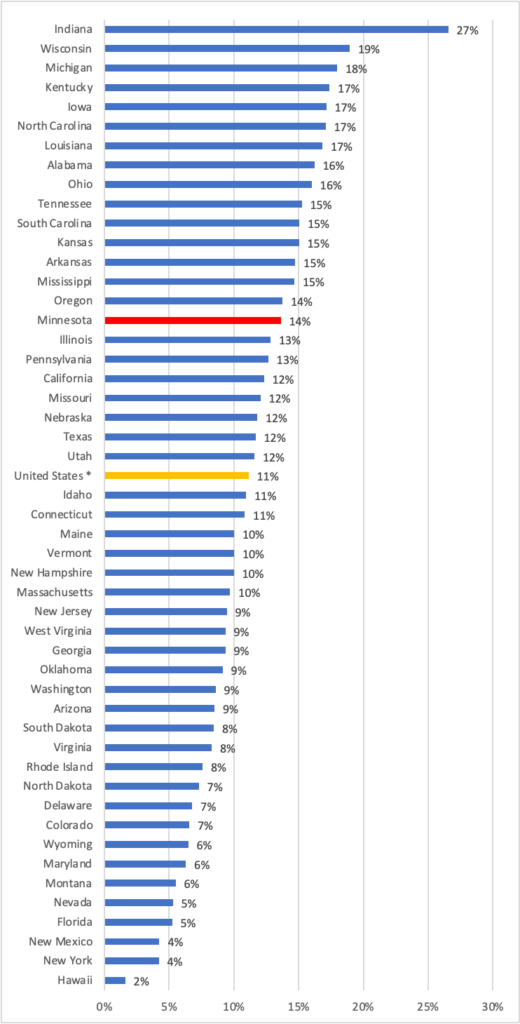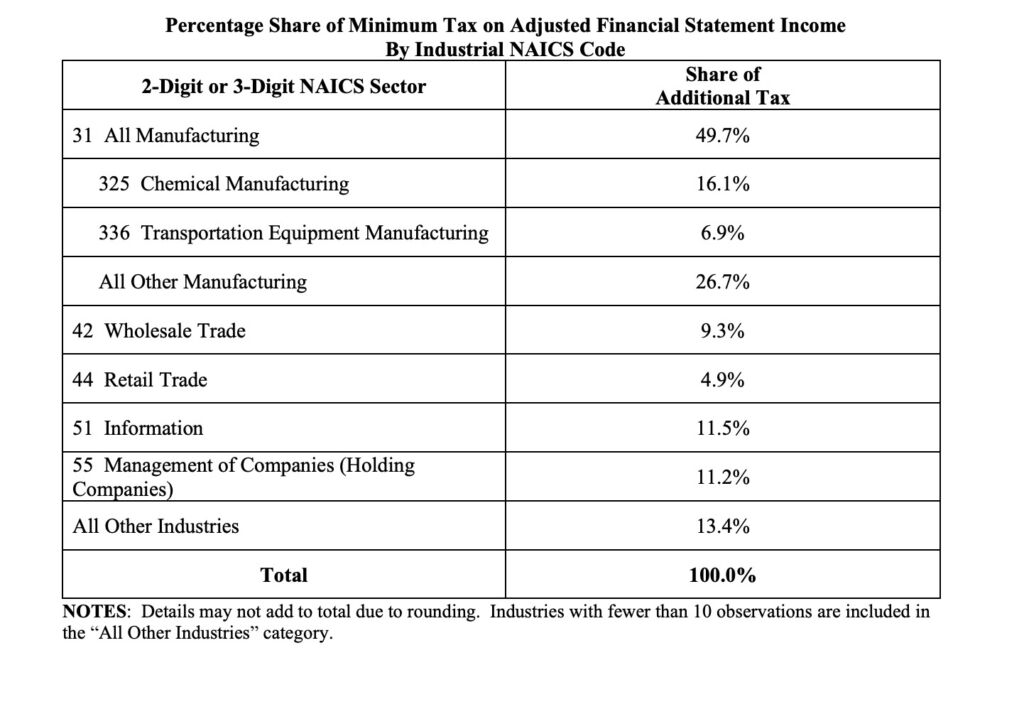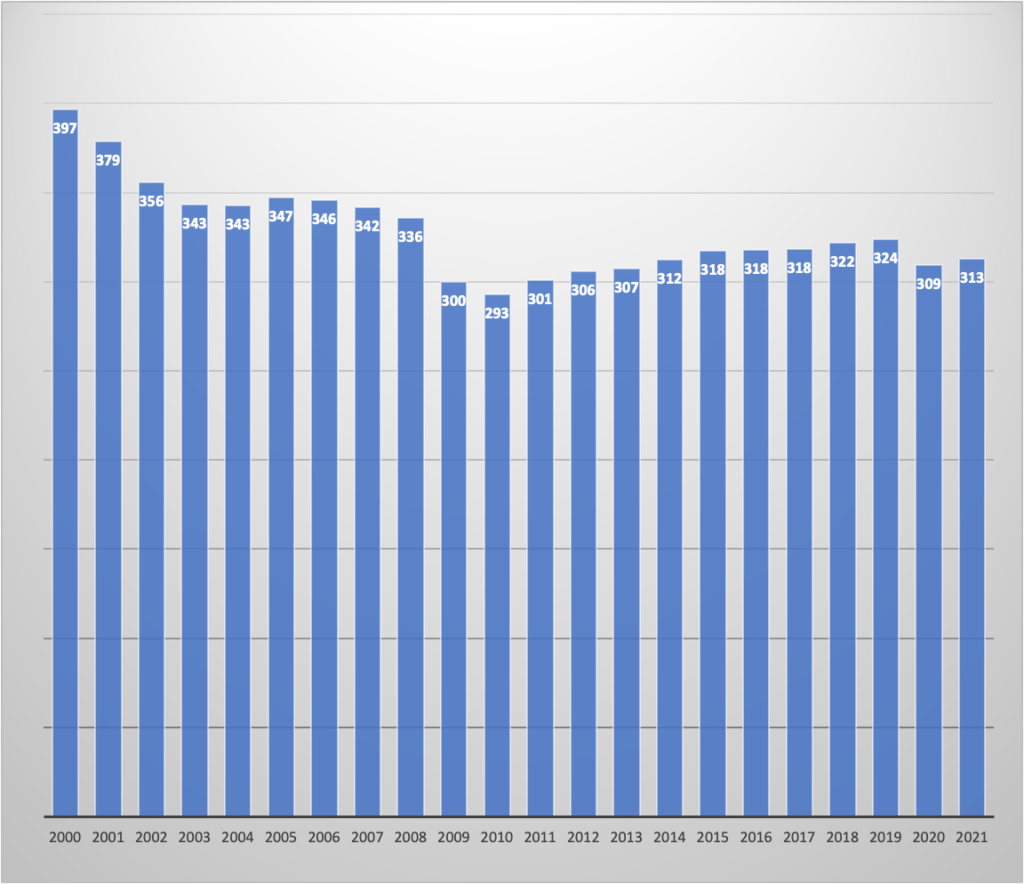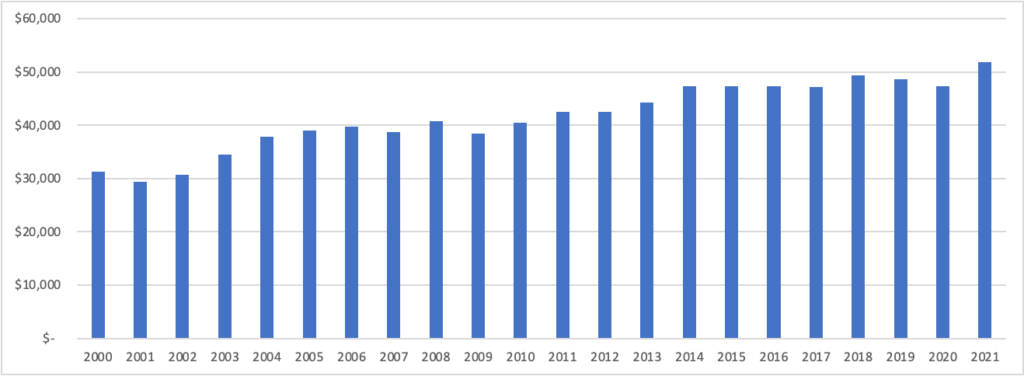The Inflation Reduction Act will disproportionately impact Minnesota’s manufacturing industry
Three days ago, President Joe Biden signed into law the Inflation Reduction Act (IRA), which ironically won’t reduce inflation. Lawmakers representing Minnesota in the U.S. Congress — like Ilhan Omar — have touted the bill as a victory for Minnesota.
And according to the Minnesota DFL party, not only will it lower inflation, but it also won’t raise taxes.
Both of these things are untrue, however. Not only will the IRA not reduce inflation, but it will also raise taxes. In fact, Minnesota will probably be among the highest burdened state with these new taxes.
Why is this the case?
Minnesota is a manufacturing-intensive state. In 2021, for example, 14 percent of the state’s GDP came from manufacturing, compared to 11 percent of the U.S. GDP. In fact, Minnesota had the 16th highest share of manufacturing GDP in 2021.
Figure: Manufacturing GDP as a share of Total GDP

Under a preliminary assessment, the Joint Committee on Taxation estimated that the 15 percent minimum tax on book income would disproportionately affect the manufacturing industry. The Committee estimated that the manufacturing industry was poised to pay about 50 percent of the new taxes.
This was due to the fact that the earlier version of the IRA eliminated the 100 percent bonus depreciation — which allows companies to fully and immediately deduct the cost of their purchases from their book incomes. Without the bonus depreciation, capital-intensive companies — like manufacturing — would report higher book incomes and thereby pay higher taxes under the IRA.

Since then, the IRA has gone through some changes and the final version of the bill still retains the 100 percent bonus depreciation. This effectively reduces new taxes that would fall on subject companies.
There is a catch, however. The bonus depreciation provision will be phased out between 2023 and 2026. This means that after that, with a normal depreciation schedule, the IRA will work as originally intended — disproportionately raise taxes for the manufacturing industry and other capital-intensive industries.
Moreover, as the Daily Signal estimates, even with the bonus depreciation in place, manufacturing would still
bear at least 2.5 times as much of the burden of the tax, relative to the sector’s size as a share of the economy.
Manufacturing is already troubled, new taxes won’t help
Research already shows that high corporate taxes are bad for the economy. They discourage investment, job creation, and income growth.
But for manufacturing, things will only be getting worse. Manufacturing has been a decline both nationally and in Minnesota. According to the Daily Signal,
Employment in U.S. manufacturing dropped by about 33% between 2000 and 2010. Since then, manufacturing’s steep decline has reversed slightly, but manufacturing jobs remain more than 25% below 2000 levels.
Indiana, Wisconsin, Michigan, North Carolina, and Kentucky combined have lost over 1 million manufacturing jobs since 2000. Largely because of deep losses of manufacturing jobs, total private sector employment in Indiana, Wisconsin, and Michigan fell 7.5% in this period.
Likewise, in Minnesota, the manufacturing industry has lost more than 20 percent of its jobs between 2000 and 2020.
Figure: Employment in the Manufacturing industry, Minnesota (Thousands)

Furthermore, between 2018, and 2020 GDP in the manufacturing industry declined. While in 2021 the industry started to recover, these high taxes will potentially affect that recovery.
Figure: Minnesota manufacturing GDP (Million 2012 $)

Minnesota businesses do not need new taxes
Minnesota is already a high-tax state. So, any new taxes at the federal level would affect our state businesses and workers more disproportionately compared to other low-tax states.
It does not help that the IRA will impact one of our important industries — manufacturing — much more heavily, giving Minnesota an outsized impact compared to most other states.